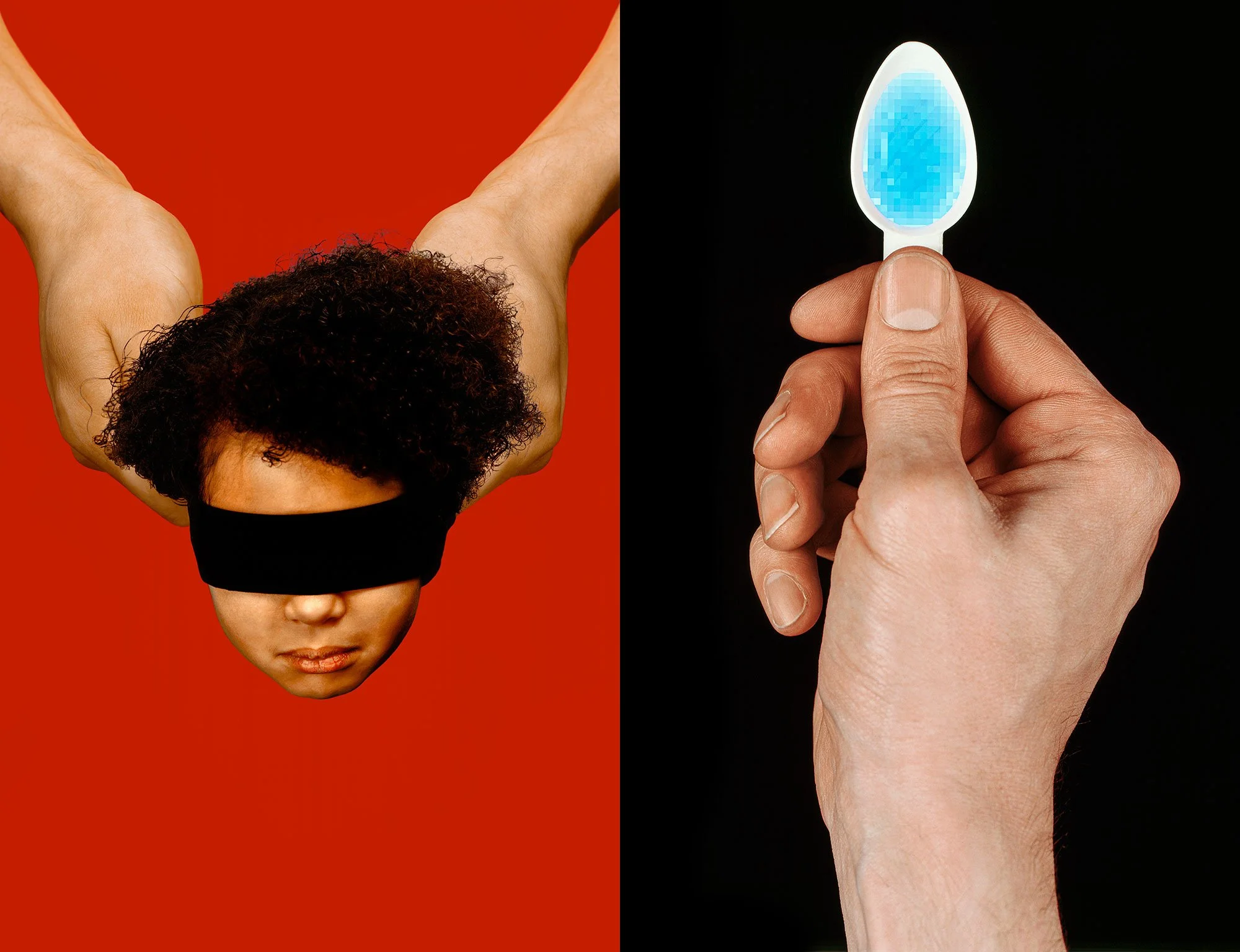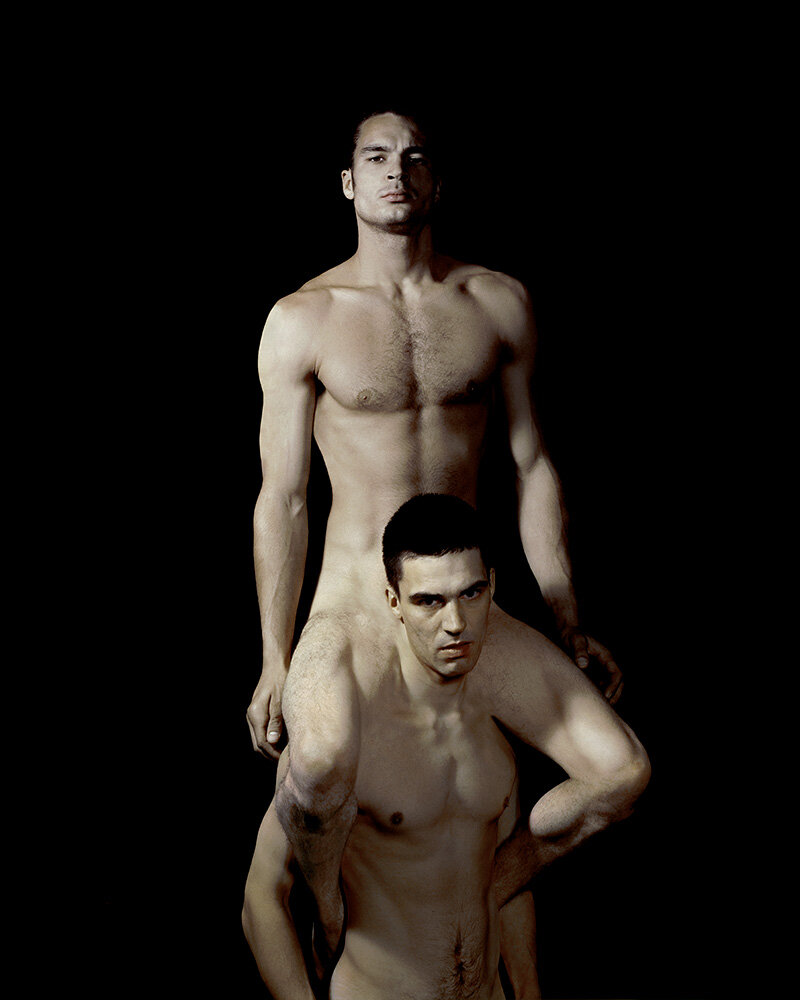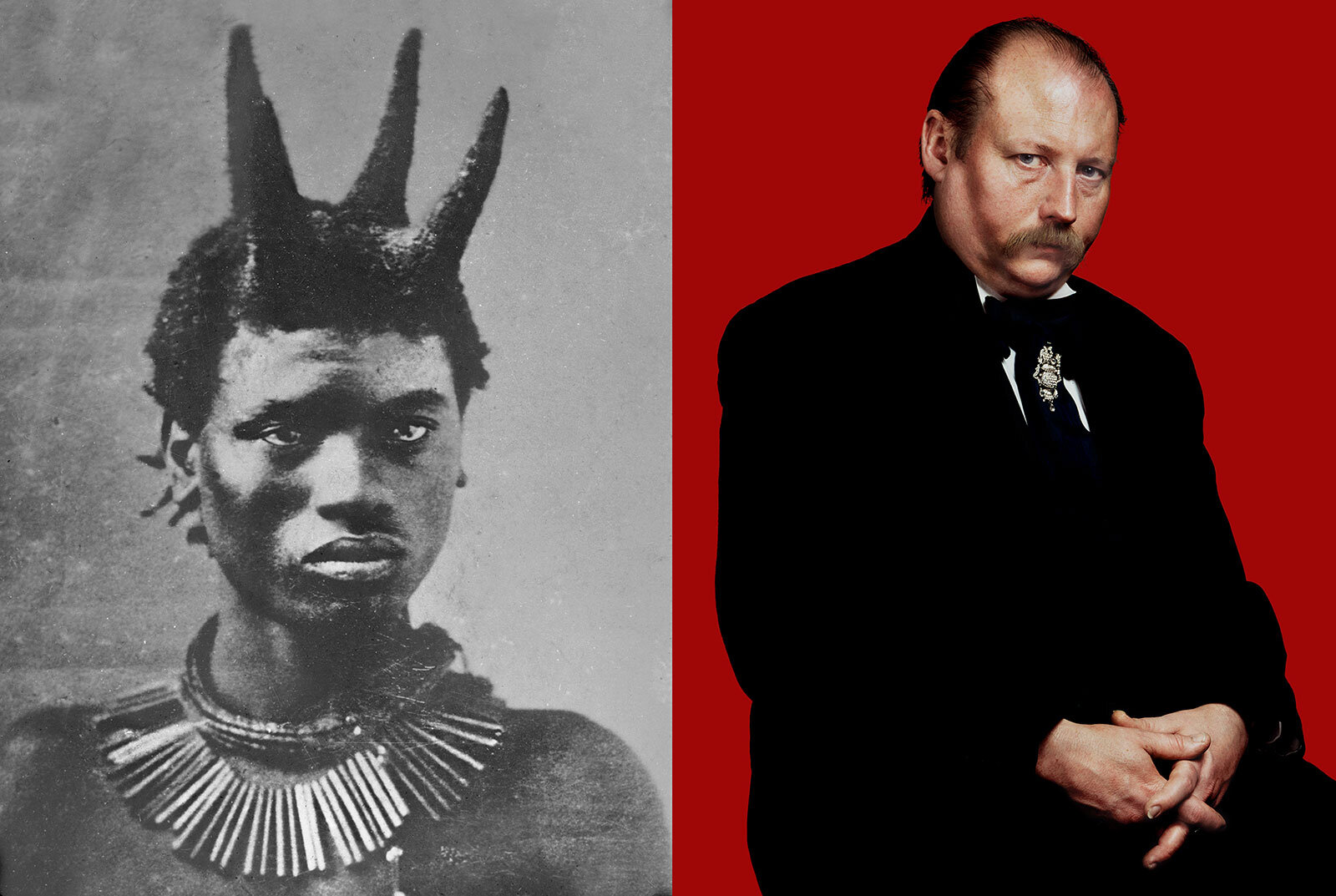dis
the power of information
dis was conceived in 1990 while publishing a book for artists of the Slovene collective NSK. At that time in former Yugoslavia predictions of impending war, ethnic cleansing and human rights violations were common bar room themes. These forecasts, although widespread locally, stood starkly at odds with international perceptions and were often met with skepticism or disbelief. Subversion of facts or truths had profound and far reaching consequences. History tragically confirmed the accuracy of these predictions, prompting me then to question the global community’s inaction despite clear foreknowledge of the unfolding events.
Quantel Paintbox
I recognised then that information, as a commodity, is invaluable and as a tool is indispensable. Information is acquired by any and all means: coercion, torture, espionage, interception or eavesdropping, to name a few. Information is employed to empower or acquiesce, to exonerate or subjugate. Those who control information could suppress free speech through censorship. They could undermine trust and alter the ‘truth’. Disinformation- the deliberate distortion or manipulation of information designed to deceive and control was the tenet of dis.
For dis I created ten distinct images. Each image was comprised of photo transparencies that were scanned on a drum scanner and composited using a QGP- Quantel Graphic Paintbox. This nascent, pre-Photoshop technology was the state-of-the-art in photo retouching. The QGP was at the cutting edge of the digital revolution and was the reserve of high-end design studios. The QGP enabled me to digitally alter the original context and manipulate the meaning of these images.
Throughout dis I sought to anticipate methods and trends of presentation where technology could be employed to alter our perceptions or beliefs. My images referenced cultural symbols used throughout society whose intent was to provoke response or prompt call-to-action. The images were faxed- prior to the widespread use of email- to ten writers, artists and poets, who responded with prose integral to the visual works. The combination of visual imagery and the written word compelled viewers to critically examine how presentation can inform, persuade or manipulate perception. dis addressed the ethics of manipulation and the advent of the digital era.
Today, dis has come full circle. Contemporary terms such as "info wars," “weaponisation of information,” “cyber warfare,” “deepfake,” and “fake news” vividly underscore the continued relevance and prescience of the project. Technology has advanced exponentially since my initial use of the Quantel Paintbox, and the emergence of AI introduces unprecedented capabilities for manipulation and propaganda, marking a new chapter in the complex relationship between information and truth.
dis was commissioned by the Art Museum, Kelvingrove, for inclusion in their 1993 “New Arts” season.
Mommy, what are you giving me?
It’s neither hot chocolate nor tea.
It’s not milk of magnesia, it’s not honey.
It’s not Pepsi-Cola and costs no money.
It’s not cod liver oil, for it doesn’t smell.
It’s not orange juice, though it goes down well.
It doesn’t taste bad and you shouldn’t cry.
It’s a lie.
Joseph Brodsky
Comprehension teach us to think
Love teach us to feel
But we love the truth at our free will
Durda Otrzan
There is a cure for every ill
A nation knows.
A loose tongue is the greatest ill
The tyrant fears.
The river has long dried,
The corpse of yester year
Flaunts its naked grin
Bleached on the river bed
But the state must guard
Its bankrupt secrets.
A loose tongue soon discovers
Where the shoe pinches.
Wole Soyinka
Deaf-mute: your anxiety is guaranteed. Not like death.
Pop art told the hollow dreams wrongly. Moments, short as nails.
I, a servant, last shaman of undignified lords.
The penultimate whore, flying like a dying thistle in outer space.
Sex-eye is looking into the camera. Everything begins again without virtue.
Get it: distances are not recycled by putrefaction.
Claudio Lange
beyond a shadow of a doubt
written by anonymous
took four prongs
of some research
to skip the usual stuff
of devils like me
and saints like Poirot
who never had to be payed
cause he had enough
back in those days
(which days? shut-up?)
cause we never said a word now
were meeting quite frequently
in Ladbroke Grove
hear she went down for his son
thats no daughter of mine
but then his son goes down for her
all of the time
now you see me
and this fellow on my left
who has a slippery moustache
and a hidden Chevrolet
have great great granddaughters
and some great great grandsons
some of them are terrible
but then, so are some of your own
I suppose we better be friends
so they will be free
or Enoch Powell might be
shaking hands with Marcus Garvey
now I know from a view
think thats not a bad idea
but what about the rest of us
with a powerful sense of humour
Jean “Binta” Breeze
History is his story.
Her story is the greatest story never told
A woman’s head is under her husband’s feet-
Indian proverb
The body of a woman is filthy,
and not a vessel for the law -
Buddha
Three things are insatiable,
the desert, the grave and a woman’s cunt -
Arab proverb
Man is the image and glory of God
but the woman is the glory of man
and the man is the head of the woman -
St Paul
Rosalind Miles
The sense - producing human machine works on the basis of a very simple law:
We cannot see all the phenomena we can think of,
and we cannot think about certain images we can see.
The power of the sense, which cannot be reproduced in words or images,
belongs to the world of human feelings, as inner side of every image or word.
The sense we live in - the sense behind the one we believe in - is a vehicle which can be used for our journey or abused for the journey of someone else.
Eda Cufer- NSK
See enough?
Four-eyes!
Do you see enough?
Glasses always were a curse
for boys as blind as bats
and worse, not fit for football.
Couldn't see their fingers
in front of their faces -
sent on wild goose chases for a ball they'd never find -
Specky Mc Gaughey (pronounced Mc Gecky) -
a cruel and imperfect rhyme
reduced a boy to ballocks and made him cry.
See enough ?
Goggle eyes !
Do you see enough ?
One specky four eyed bastard
got brave, took off his glasses
and squared up for a row.
Gone was the gape,
the permanent surprise -
there was something wise - serene about the eyes.
He saw far more than he let on -
like where we got our power from.
Do you hear what I'm saying?
Do you see what I'm saying?
I'm telling you.
Do you see what I'm saying?
Are you talking to me
or chewing a brick ?
John Kelly
Two silences; the first is silence toward the world. The second is the silence toward one's self.
One prison inside another. Nothing's left but the moon's imagined hum.
The inner silence learns its craft from the other, from the world and its grand delinquents and their murders, their medals and their eyes.
And at the same time we are secretly amazed that after all, we have not forgotten how to speak, and out of the depths we hear.
Arthur Miller
We have lived for seventy years in the society where disinformation was the main part of our life.
For the whole time the media of this country have deceived not only their own people but the whole world.
The victims of these lies were the political activities of the whole world, as well as the outstanding intellectuals of East and West.
The result of this disinformation was not only that some persons, but whole peoples perished.
The most discouraging result of all these lies was for the child, as the lies poisoned their conscience and soul, and ruined all their life.
Action has to relive the purity of the purity of the world community and to make the world society free of lies.
Yevgeniy and Nadia Rein
dis Kelvingrove Art Gallery, Glasgow, 1993
Kelvingrove ‘New Arts’ Exhibition Exhibition Program
By reading this text you have actively involved yourself in a complex relationship combining author, audience and arena.
As an exhibition publication you expect this piece of paper to inform you - to relay basic ‘truths’ about the art which is being presented to you. There exists an implied acceptance that the curator, or artist, can inform you of the legitimate meaning of the work. This information will supplement your own experience of the work, and indeed may openly contradict your personal reactions to it, but it will, nevertheless, have an air of authority conferred upon it by its origin and the format in which it is presented.
It is with the assistance of information that the individual conforms with, or adapts into society; choosing between lines of thought, psychology and conduct which are promoted by the state.
Our everyday existence revolves around the assimilation of information. The sources of this information are as varied and as complex as the ways in which it is communicated. Public institutions, the media, the education system, the family; are all instrumental in the establishment of common levels of behaviour, morality and judgement. We equate the acquisition of knowledge with both power and an insight into ‘truth’. As whole societies attain political emancipation, total control of information has given way to unprecedented access. New histories are being pieced together as revelations of the past are coming to the fore. The result is a confusion of signals, as the parameters of ‘truth’ continue to shift.
Significantly, photography has proved to be the artistic medium through which an association with the objective presentation of truth has developed.
The old adage that the ‘camera never lies’ is a deep seated belief, despite the fact that since its invention photographers have distorted their projected realities through both the technical processes they employ, such as composite negatives, and the selectivity of their viewfinders. As a result of being photographed, subjects become part of a system of information. The implications of this fact are increasing as in today’s age of computer technology, photography moves steadily into the realm of electronics, and hence becomes susceptible to the infinite possibilities of manipulation and data transmission. Images can now be electronically generated, digitally manipulated and accessed instantly across the globe by means of telecommunication networks. The once accepted maxims of representation, specificity and objectivity are being systematically devalued and replaced by a sense of unlimited multiplicity. Thus the unbounded possibilities of computer generated photography can be seen to reflect the ways in which the constantly changing pool of public information determines our perceptions of reality; the ways in which we see.
Gavin employs the Quantel Graphic Paintbox to restate the parallels between these levels of visual and cognitive information. The technology enables him to present a new type of photographic reality through the distortion and manipulation of electronic information. Throughout dis the distortion is directed in such a way as to communicate the social implications of the act of ‘change’ itself.
Whilst addressing the icon of the nude, technology literally removes the means through which personal identity may be claimed. As a result of technology the individual undergoes a process of dehumanisation to become little more than a vessel; in this example, de-sensualised, non-erotic.
The analogy with society as a whole is obvious. It is this sense of the subtlety and pervasiveness of the manipulation which provides an element of subversion to the work. At first glance, we can discern nothing about these images which seems to be ‘unreal’ and hence they remain within our realms of acceptance and comprehension. Only when we begin to focus our attention do we realise the levels on which information is being controlled.
The success of cultural symbols is linked to the representation of collective knowledge and awareness. We identify an image and make a range of ostensibly inherited associations, cultural, political or historical. The imagery which Gavin employs capitalises on our range of programmed responses, yet also encourages a re-assessment through the ways in which images are juxtaposed. The nude, the child, the cross; we come to realise that even in the realm of the symbol there is no definitive truth. Meaning is predetermined by the cultural background, disposition and experience of the viewer.
The format in which dis is presented provides another link to the concept of information and its presentation. The physical dominance of the image/text within the gallery implies the scale of image saturation in the media, the billboard format, the public health warning; through which we are informed, instructed or entertained. The power of the media advertising cannot be underestimated.
Todays images are high impact, immediate. Information is coded through a form of visual shorthand. As audiences become more sophisticated in their interpretations and understanding, so advertisers have been forced to find alternative ways in which to grab and retain the attention of their audience.
What we now see is the posing of visual puzzles, the meanings of which must be consciously unravelled. dis offers comparable layers of meaning to be investigated, invested with truth and held up as an interpretation of reality.
The success of dis derives from the action of the individual.
Lorraine Grant,
Curator. Art Gallery and Museum, Kelvingrove, Glasgow
Gavin Evans gratefully acknowledges the participation and support of all who joined in the making of dis -
Writers: Jean ‘Binta’Breeze, Joseph Brodsky, Eda Cufer, John Kelly, Claudio Lange, Rosalind Miles, Arthur Miller, Durda Otrzan, Yevgenij and Nadia Reine and Wole Soyinka
Curator/commentator: Lorraine Grant
Paintbox operator: Richard Scott.
Scanner operator: Chris Bennett
Co-producer: Peter Ross
Robin Bernard, Mark Borkowski, Murray Buchan, Lars Christian, Donna Croall, Ashley Crompton, Margaret Drysdale, Danny Earl, Sulaima Elmi, Cal Elmi Evans, Pierre de Fresue, Lorraine Grant, Martin Galloway, Mike Heudiberg, Karen Lamond, Irena Luksic, Joe MacKechnie, David Metcalfe, Michael Morris, Adrian Ross, Danny Sapani, Chloe Shoniwa, Raymond Stern, Ben Thomas











